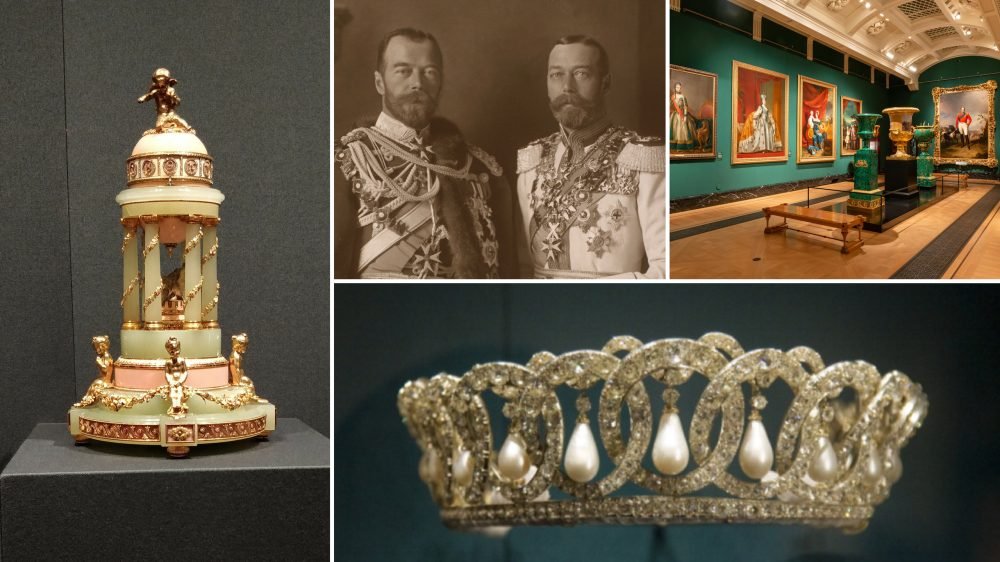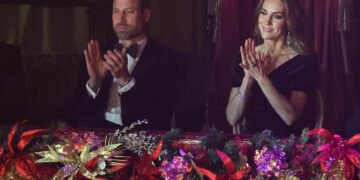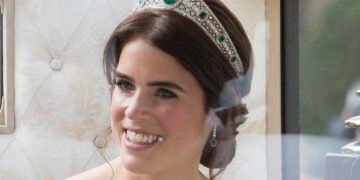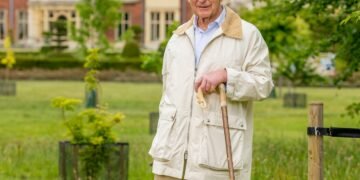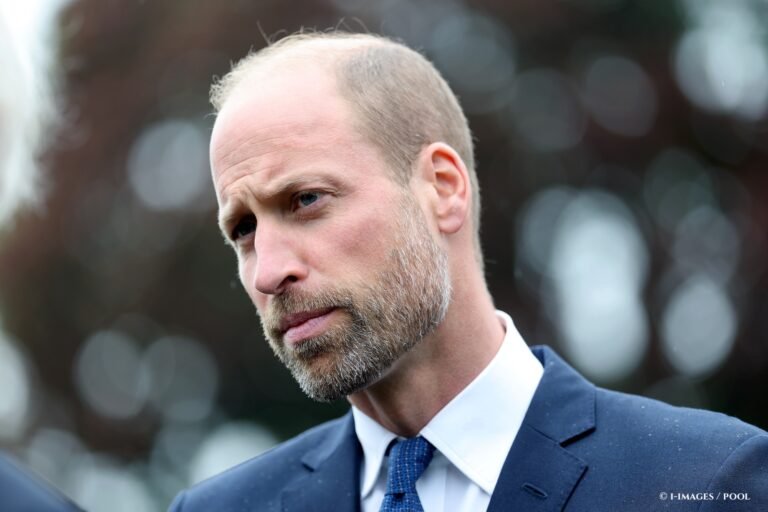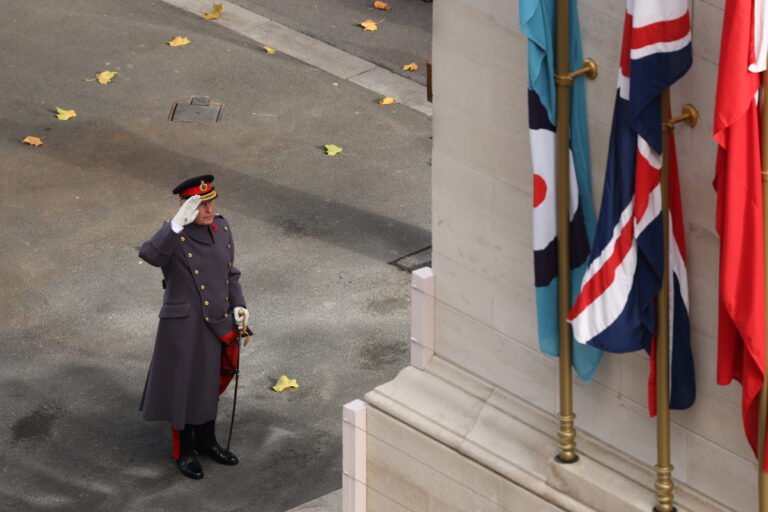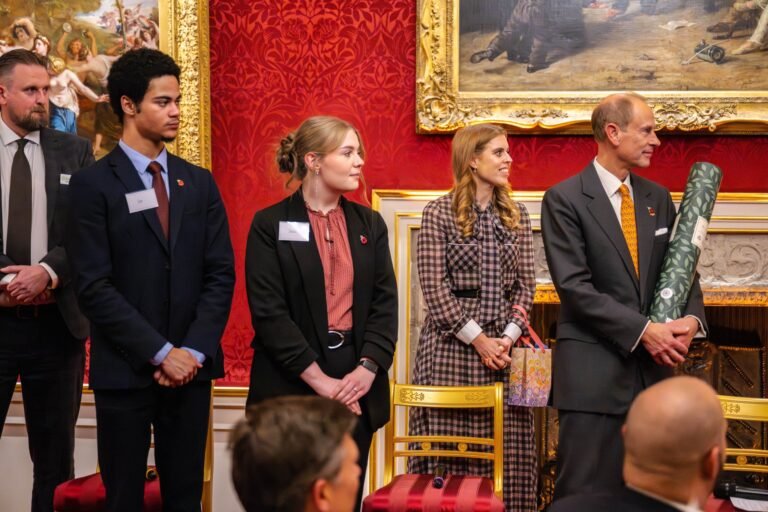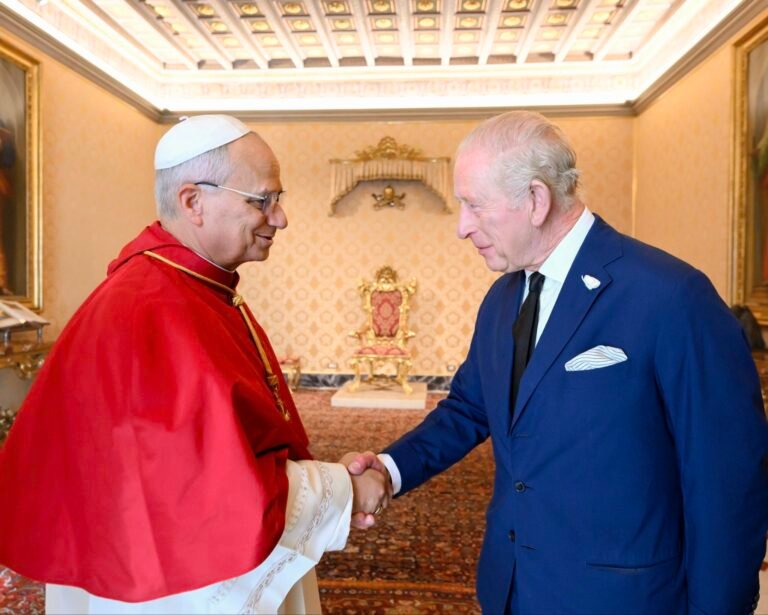What a treat to have spent a morning at The Queen’s Gallery in Buckingham Palace to visit the much-talked-about exhibition, ‘Russia, Royalty and The Romanovs’. We do not want to reveal too much of the exhibition to our readers, so we have selected some of our favourite pieces for you to enjoy.
It has been almost 101 years since the end of the Romanov imperial dynasty in Russia. The Romanov family reigned from 1613 until 15th March 1917 when Tsar Nicholas II was forced to abdicate. On 17 July 1918 Nicholas, his wife Alexandra Feodorovna, and their five children, Olga, Tatiana, Maria, Anastasia and Alexei were murdered by the Bolsheviks.
Britain and Russia have a long history through war, alliance and dynastic marriages. For the first time, The Queen’s gallery is displaying many different works of art and objects for visitors to explore whilst telling the story of the deeply entwined relationship between the British Royal Family and the Romanovs.
— BODIES CONFIRMED TO BE TSAR NICOLAS AND TSARINA ALEXANDRA—

The exhibition begins with a focus on the Crimean War with a series of photographs by Roger Fenton taken in 1855.
The Crimean War was fought from October 1853 – February 1856, in which the Russian Empire lost to an alliance of the Ottoman Empire, France, Britain and Sardinia.
Fenton was a British photographer and noted as one of the first war photographers whose photos were for public consumption. Fenton’s friends, Prince Albert and Duke of Newcastle, Secretary of State for War, urged Fenton to go to the Crimea to record the war.
Most of Fenton’s photographs from the Crimea focused on creating moving portraits of the troops preparing for battle and landscapes of the battlefields after the war.

One of the most striking photographs of the exhibition is Fenton’s ‘The Valley of the Shadow of Death’. This photograph is the landscape near to where the Charge of the Light Brigade took place. In letters home, soldiers called the valley ‘The Valley of Death’.
From his experiences in the Crimea, Fenton became depressed from witnessing battles and death; he is said to have become depressed after witnessing the ‘carnage’ at Sevastopol.
THE QUEEN SENDS NICHOLAS II’S ROYAL VICTORIAN CHAIN BACK TO RUSSIA
After the war, 312 prints were displayed at an exhibition in London; Fenton showed these photographs to Queen Victoria, Prince Albert and Napoleon III in Paris.

Although not necessarily royal-focused, the Fenton exhibition does give a good insight into how the Russian Empire and Britain were once enemies in a devastating war, and makes the events of the next 70 years even more interesting.
The second half of the exhibition focuses on the complex, inter-connecting relationship between the Romanovs and the British Royal Family.
A portrait that stands out to all visitors as soon as you enter the room is of Catherine II, Empress of Russia, painted by Vigilius Eriksen. Catherine II, also known as Catherine the Great, was Russia’s longest-ruling female leader from 1762-1796. She was grandmother to Alexander I of Russia, who would play an important role in relations between Russia and Britain. The beautiful piece shows Catherine in her coronation gown.

An interesting duo of the exhibition is a portrait of Princess Charlotte, and the silk dress she appears in, both from 1817. Princess Charlotte was the only daughter of George IV; she married Queen Victoria’s uncle Prince Leopold, future King of the Belgians but died soon after childbirth in 1817.
In the portrait, Charlotte wears a blue silk Russian dress with the star of the Order of St Catherine on her left breast. She received the Order from Maria Feodorovna, Empress of Russia and second wife of Tsar Paul I. It is thought that the presence of Emperor Alexander I in London in 1814 created a fashion trend for dresses in the Russian traditional style.

The blue silk dress is displayed on a mannequin in the exhibition.

What cannot be missed in the centre of the exhibition if the vase and pedestal pieces – we were blown away by the colours and details of the vases. Our favourite vase is the turquoise vase and pedestal created by the noble Demidov family in 1850. The design, with gilt-bronze foliage and flowers, is in the fashionable neo-rococo style. The vase was exhibited at the Great Exhibition in London in 1851, and later was purchased by Queen Victoria and Prince Albert.

The exhibition does not just display pieces of artwork; there are a number of beautiful objects made in Russia and used by the British Royal Family. Our favourite trinket is the blue Fabergé cigarette case made in 1908. On the case, there is a diamond-set mount in the shape of a snake biting its tale – the symbol of everlasting love.
The cigarette case was given to King Edward VII by his mistress, Alice Keppel; Mrs Keppel is The Duchess of Cornwall’s great-grandmother.

Upon King Edward VII’s death, his wife Queen Alexandra returned the case to Mrs Keppel. Mrs Keppel then returned the case to the possession of the Royals in 1936, when she gave it to Queen Mary, King Edward VII’s daughter-in-law.
Our favourite piece of jewellery from the exhibition is the Vladimir Tiara. If you are a regular reader of The Crown Chronicles, you will know that we love a tiara! The Vladamir Tiara takes its name from the fact that it was made for Grand Duchess Maria Pavlovna, wife of Grand Duke Vladimir, likely at the time of her marriage. The tiara was made by the jeweller to the imperial court, C E Bolin; it consists of intersecting circles set with diamonds, each hung with a claw-set pendant pearl, although there are now emeralds for the tiara, too.
Maria’s daughter, Princess Nicholas of Greece, sold the tiara to Queen Maria in 1921.
Embed from Getty Images Embed from Getty Images
What was really highlighted during the exhibition was the entwined relationship between the British Royal Family and the Romanovs through dynastic marriages.
Two pieces of Juliane, Princess of Saxe-Coburg-Saalfield, Grand Duchess Anna Feodorovna begin the series of portraits showing the connection between the Romanovs and the British Royals. Juliane was the maternal aunt of Queen Victoria and was married to Grand Duke Konstantin Pavlovich of Russia. One of the portraits by William Corden The Younger hung in Queen Victoria’s bedroom at Windsor Castle.
An interesting addition to the exhibition is a portrait of Grand Duchess Alexandra Iosifovna of Russia by Franz Xaver Winterhalter, one of Queen Victoria’s favourite portrait artists. Considered a great beauty in her youth, Alexandra married Grand Duke Konstantin Nikolayevich of Russia, son of Tsar Nicholas I of Russia. Through their daughter, Olga Queen of the Hellenes, Alexandra is the great-grandmother of The Duke of Edinburgh.

The first of the two most famous marriages between the British Royal Family and the Romanovs is between Queen Victoria’s son Prince Alfred and Tsar Alexander II’s daughter, Grand Duchess Maria Alexandrovna. Their daughter, Marie, became Queen of Romania. Maria and Alfred were granted the titles of Duke and Duchess of Edinburgh upon their marriage; they later became Duke and Duchess of Saxe-Coburg and Gotha, after Alfred inherited the title from his uncle, Ernest II.
Our favourite portrait of Grand Duchess Maria in the exhibition is by Gustav Karl Ludwig Richter; Queen Victoria received the portrait just before Maria and Alfred’s wedding from Emperor Alexander II. There are many pieces from Alfred and Maria’s wedding in the exhibition, including medals commemorating the marriage and a beautiful portrait by Nicholas Chevalier of the wedding ceremony at the Winter Palace.

The second famous marriage is between Princess Alexandra of Hesse and Tsar Nicholas II. Alexandra was a granddaughter of Queen Victoria through her daughter, Princess Alice. Alice died when Alexandra was young, and Queen Victoria took a big interest in her grandchildren’s upbringing.
Alexandra was not the first of her immediate family to marry into the Romanovs; her sister Elizabeth married Grand Duke Sergei in 1884. Alexandra’s other sister, Victoria, is HRH The Duke of Edinburgh’s maternal grandmother. Alexandra and Nicholas married on 26th November 1894, days after Nicholas’s father died and he became Tsar.
The wedding was documented in a portrait by Laurits Regner Tuxen, commissioned by Queen Victoria. When looking at the detail of the painting, you can spot that Empress Maria Feodorovna – Nicholas’s mother – is looking sternly at the bride and bridegroom. Interestingly, Maria’s father King Christian IX of Denmark, is watching his daughter’s stern looks with an equally hard glare.

Alexandra and Nicholas shared a first cousin in King George V of Britain; Alexandra’s mother Alice was the sister of George’s father King Edward VIII and Nicholas’s mother Maria was the sister of George’s mother Queen Alexandra.
A personal photograph included in the exhibition, one of Nicholas II and George V, shows the remarkable resemblance between the two cousins. The photograph by Ernest Sandau on 24th May 1913 was taken on the last occasion the two cousins would meet at Kaiser Wilhelm’s daughter’s wedding in Germany.

If one portrait explained ‘Russia: Royalty and the Romanovs’ in a nutshell, it would be the extraordinary piece by Laurits Regner Tuxen in 1887. Queen Victoria commissioned the portrait to mark her Golden Jubilee. The portrait includes all of the Queen’s children and grandchildren. This significant piece illustrates the family ties of the European Royal Families through marriages and children, that eventually were broken after the First World War.

By 1918, Tsar Nicholas II was murdered, Kaiser Wilhelm abdicated and exiled; but it was George V and the British Royal Family that survived.
The exhibition ends on 28th April at Buckingham Palace, when it leaves for Scotland. Get tickets here. The Palace of Holyroodhouse will showcase these pieces from 21 Jun 2019 – 3 Nov 2019. Get tickets here.

